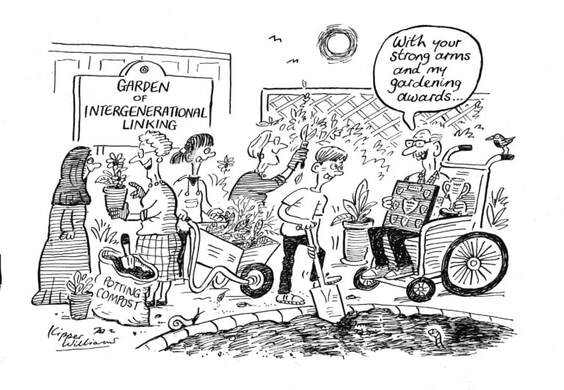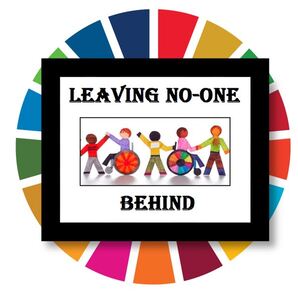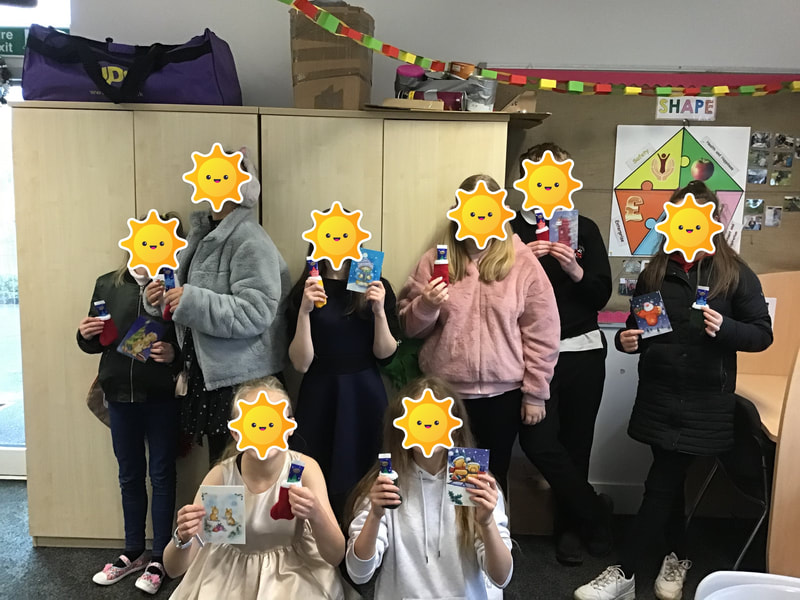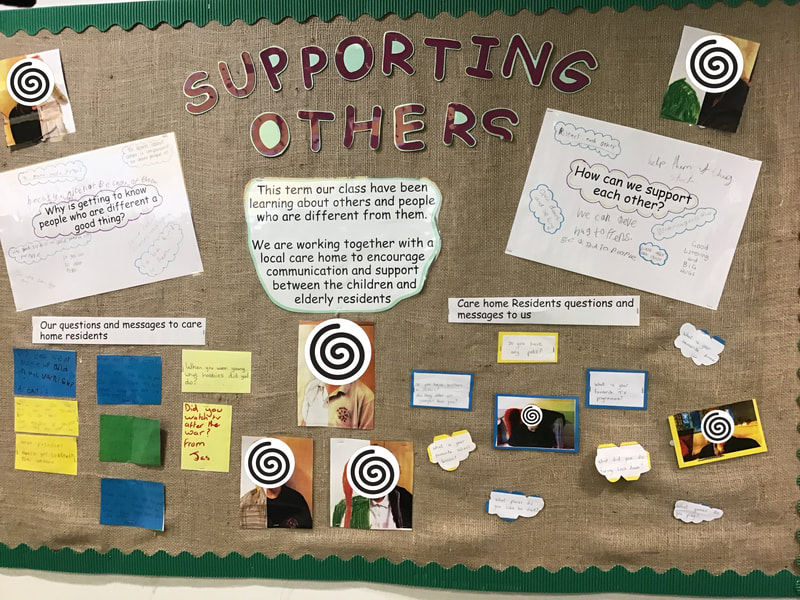
The need for people of all ages to understand how they are interconnected with the world around them is increasingly recognised as important for personal well-being. Social action through active citizenship activity is a gateway to introducing this sense of belonging to a bigger community. It provides a real-life context for unpicking values and building skills for life.
Starting to take action, however small, at a young age is likely to lead to an on-going commitment to making positive, proactive changes throughout a lifetime.
Starting to take action, however small, at a young age is likely to lead to an on-going commitment to making positive, proactive changes throughout a lifetime.
What do we mean by social action and active citizenship?
Definitions ...
Social Action - is people coming together to help improve their lives and solve the problems that are important in their own communities.
Active Citizenship – is a way of teaching Citizenship through active projects that motivate students to feel empowered to make a difference, in their local or global community.
Definitions ...
Social Action - is people coming together to help improve their lives and solve the problems that are important in their own communities.
Active Citizenship – is a way of teaching Citizenship through active projects that motivate students to feel empowered to make a difference, in their local or global community.
Why is social action and active citizenship important?
In the fast-moving world we live in today, young people are aware that they can make a difference like no other generation before them. With technology advancing every day, young people have the knowledge and awareness of their local and global communities and the issues and problems that face them, perhaps more vividly than in the very recent past. The impact of social media, and the rise of young social media influencers, demonstrates that everyone can create a platform for themselves to make their voices heard. These young people are finding they have a voice and they can make a difference to the issues that matter to them. A famous example is Greta Thunburg, and there are many others finding creative expressions for their views and interests. These advances make it possible for young people to take action for what they believe, in real life situations. Students can act on topics that they are passionate about and teachers and schools can support these students to make a real difference in their communities, by using social action through an active citizenship project.
In the fast-moving world we live in today, young people are aware that they can make a difference like no other generation before them. With technology advancing every day, young people have the knowledge and awareness of their local and global communities and the issues and problems that face them, perhaps more vividly than in the very recent past. The impact of social media, and the rise of young social media influencers, demonstrates that everyone can create a platform for themselves to make their voices heard. These young people are finding they have a voice and they can make a difference to the issues that matter to them. A famous example is Greta Thunburg, and there are many others finding creative expressions for their views and interests. These advances make it possible for young people to take action for what they believe, in real life situations. Students can act on topics that they are passionate about and teachers and schools can support these students to make a real difference in their communities, by using social action through an active citizenship project.
What is an active citizenship project?
An ACTIVE Citizenship project is:
To facilitate a classroom environment that follows the ideal of Active Citizenship, the teacher needs to give the students the tools for them to become active citizens in their own right.
Active Citizenship is most successful when students have been pre-taught about a topic or have some background knowledge of the area in which you plan to design the project. Providing a stimulus through a video clip, photographs, a visitor or even a game can provide a forum to discuss, share knowledge, generate questions and provide space for research and enquiry. The social action could be the culmination of a series of lessons exploring issues around a sustainable development goal, such as good health and well-being, no poverty, no hunger, life on land – which goal resonates with the young people?
An ACTIVE Citizenship project is:
- Initiated, led and carried out by students
- Communicated to, and carried out in the wider community
- Developed and carried out together
- Beneficial to the community and addresses an issue of concern in society
To facilitate a classroom environment that follows the ideal of Active Citizenship, the teacher needs to give the students the tools for them to become active citizens in their own right.
Active Citizenship is most successful when students have been pre-taught about a topic or have some background knowledge of the area in which you plan to design the project. Providing a stimulus through a video clip, photographs, a visitor or even a game can provide a forum to discuss, share knowledge, generate questions and provide space for research and enquiry. The social action could be the culmination of a series of lessons exploring issues around a sustainable development goal, such as good health and well-being, no poverty, no hunger, life on land – which goal resonates with the young people?
The idea of Active Citizenship is that the students take control of the project - they plan, work collaboratively together, control the budget and timescales and communicate with each other and their community - in order for the project to be successful. The teacher acts as the facilitator, guiding and aiding the students, as and when needed. Providing a planning structure, helping students recognise their skills and contribution to the team, supporting them to generate and select from ideas, providing supportive feedback and advice are all vital aspects of the facilitator role.
Setting guidelines with the young people in advance, explaining your role as an “advisor”, that you will intervene if safety is compromised, but that the responsibility belongs to them, is a good place to start. The aim is to provide them with a safe space, where they can make mistakes and learn from them – so don’t forget to build in opportunity and time to reflect and debrief. What went well, what was trickier than expected, what would they change if they were to repeat the project, what have they learnt that will help them in the future?
Social action, active citizenship projects can vary greatly in shape and form. Tidying your bedroom, planting flowers, painting a mural, writing a play, organising a Fair-Trade coffee morning, making decorations from recycled materials ... the list is endless. Raising money for charity is always a popular option, but thinking deeper and identifying an action with a clear purpose that will impact the attitude of your friends, family or community can be just as worthwhile.
Consider the impact your social action will have – which will be most beneficial and effective? How will you know? What do we want to achieve?
Starting with seemingly small personal actions, and working towards more adventurous active citizenship activities, will help build confidence for all. An example of an Active Citizenship project would be:
‘A group of students set up a project to create an urban garden around an old peoples home in their local area, it will be used by residents of the care home and the local community to address the issue of social isolation and depression.’ This type of project brings multiple benefits and could easily grow into a long term intergenerational project, bringing younger and older people together for activities, inspired by the ideas and skills of all the people involved.
Take a look at the social action case study presentation below. Young people, inspired by European Football's drive to promote diversity, devised a campaign increasing LGBTQ awareness and fostering inclusive values and attitudes across the community.
Setting guidelines with the young people in advance, explaining your role as an “advisor”, that you will intervene if safety is compromised, but that the responsibility belongs to them, is a good place to start. The aim is to provide them with a safe space, where they can make mistakes and learn from them – so don’t forget to build in opportunity and time to reflect and debrief. What went well, what was trickier than expected, what would they change if they were to repeat the project, what have they learnt that will help them in the future?
Social action, active citizenship projects can vary greatly in shape and form. Tidying your bedroom, planting flowers, painting a mural, writing a play, organising a Fair-Trade coffee morning, making decorations from recycled materials ... the list is endless. Raising money for charity is always a popular option, but thinking deeper and identifying an action with a clear purpose that will impact the attitude of your friends, family or community can be just as worthwhile.
Consider the impact your social action will have – which will be most beneficial and effective? How will you know? What do we want to achieve?
Starting with seemingly small personal actions, and working towards more adventurous active citizenship activities, will help build confidence for all. An example of an Active Citizenship project would be:
‘A group of students set up a project to create an urban garden around an old peoples home in their local area, it will be used by residents of the care home and the local community to address the issue of social isolation and depression.’ This type of project brings multiple benefits and could easily grow into a long term intergenerational project, bringing younger and older people together for activities, inspired by the ideas and skills of all the people involved.
Take a look at the social action case study presentation below. Young people, inspired by European Football's drive to promote diversity, devised a campaign increasing LGBTQ awareness and fostering inclusive values and attitudes across the community.
A true active citizenship project gives real power and responsibility to the young people. It is what they want, and they are the central decision makers, planners and do-ers. They may need some support, with accessing resources and space or making some connections or arrangements, but the most valuable learning comes from them gaining the skills and experience – not from adults super-imposing their own vision, ideas, limitations or fears.
It is always useful to take a look at Hart’s Ladder of Participation (referenced in further reading) and consider where the active citizenship/social action projects in your school may sit on this ladder and what changes could be made to move up to the next step of your ladder. Identify where you are starting from and take small steps to make student voice and student leadership central to your school ethos, in a sustainable and meaningful way.
It is always useful to take a look at Hart’s Ladder of Participation (referenced in further reading) and consider where the active citizenship/social action projects in your school may sit on this ladder and what changes could be made to move up to the next step of your ladder. Identify where you are starting from and take small steps to make student voice and student leadership central to your school ethos, in a sustainable and meaningful way.
Further Reading:
Hart's Ladder of Participation - https://blog-youth-development-insight.extension.umn.edu/2018/03/how-to-get-to-top-of-youth-voice-ladder.html
Research Papers and Articles ...
Active Citizens for the Common Good: The Active Citizenship Footprint - http://volonteurope.eu/wp-content/uploads/2020/10/Active-Citizenship-Footprint-FINAL.pdf
Active Citizenship Can Change Your Country For the Better - https://www.opensocietyfoundations.org/voices/active-citizenship-can-change-your-country-better
8 Ways to Improve Social Action in Your Primary School - www.youngcitizens.org/Blog/8-ways-to-improve-social-action-in-your-primary-school/
Hart's Ladder of Participation - https://blog-youth-development-insight.extension.umn.edu/2018/03/how-to-get-to-top-of-youth-voice-ladder.html
Research Papers and Articles ...
Active Citizens for the Common Good: The Active Citizenship Footprint - http://volonteurope.eu/wp-content/uploads/2020/10/Active-Citizenship-Footprint-FINAL.pdf
Active Citizenship Can Change Your Country For the Better - https://www.opensocietyfoundations.org/voices/active-citizenship-can-change-your-country-better
8 Ways to Improve Social Action in Your Primary School - www.youngcitizens.org/Blog/8-ways-to-improve-social-action-in-your-primary-school/







